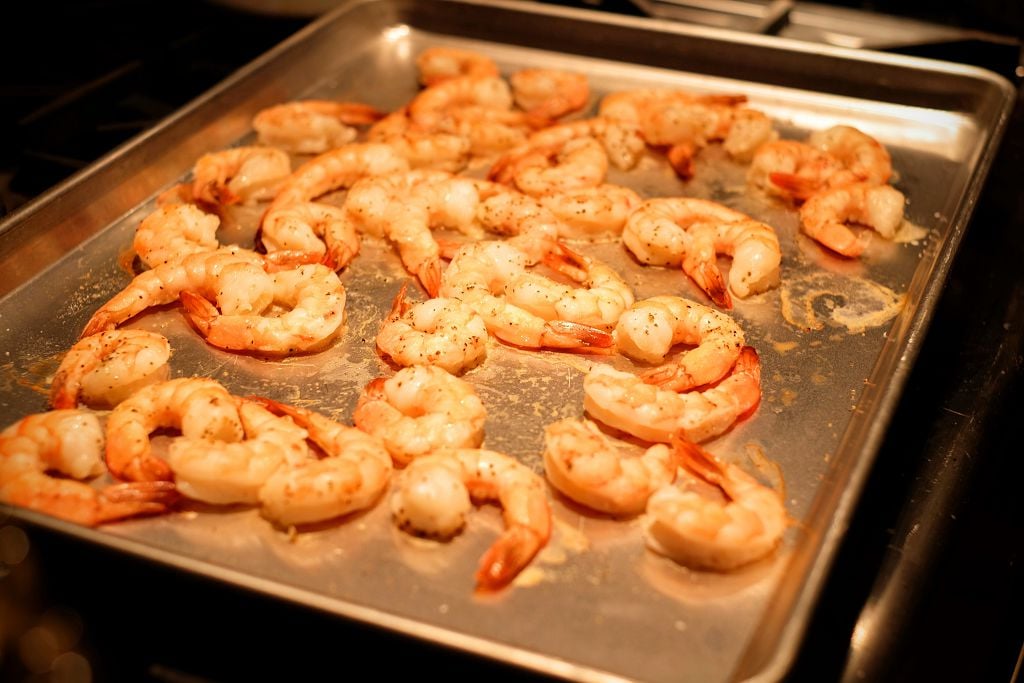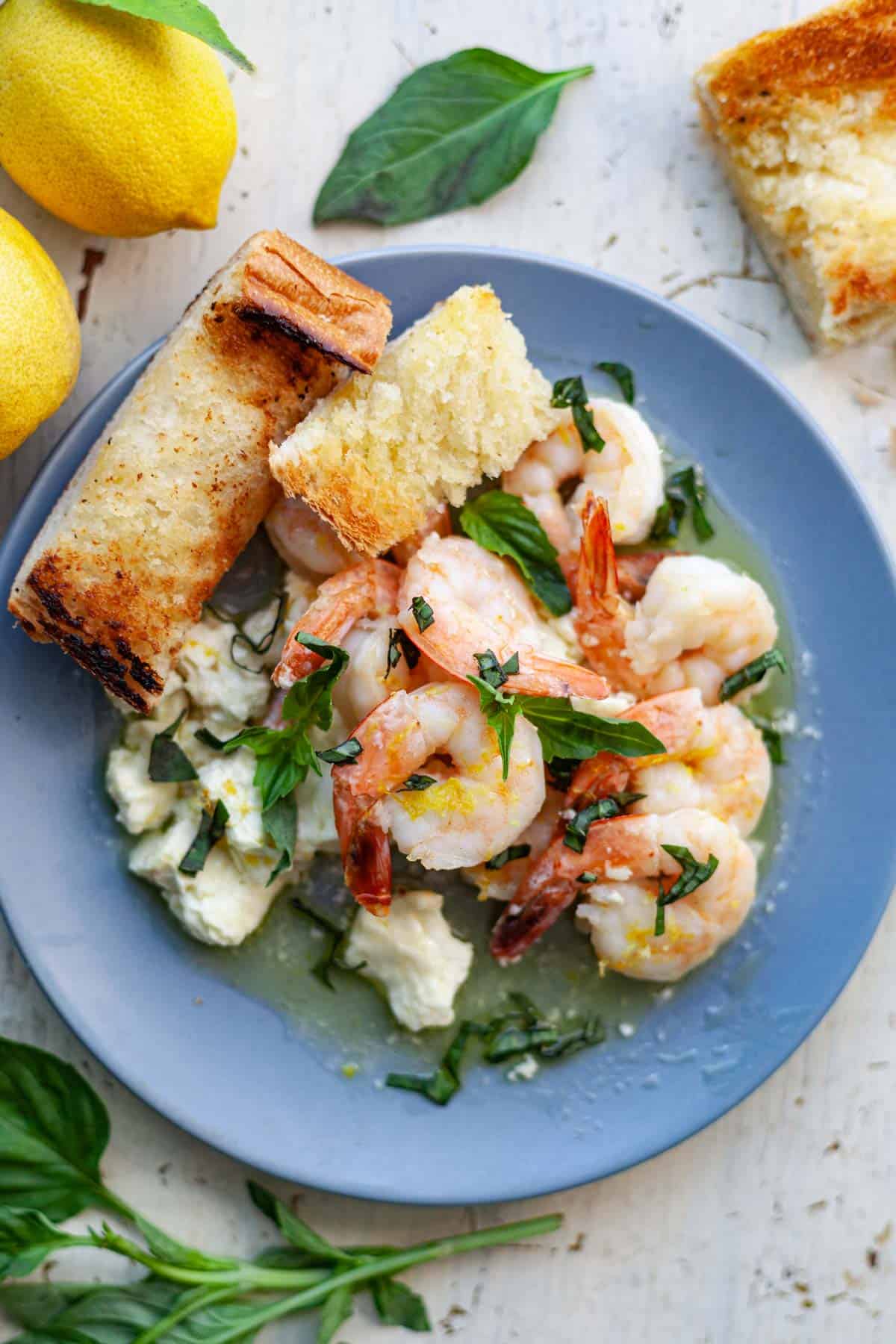Hey there, shrimp lovers! I’ve been cooking seafood for years, and one question I get asked a lot is whether it’s safe to eat reheated shrimp. The short answer? Absolutely yes! But hold up – there’s more to it than just popping those little crustaceans in the microwave and hoping for the best.
Quick Answer
You can safely eat reheated shrimp if you:
- Store it properly in the fridge within 2 hours of cooking
- Consume it within 3-4 days
- Reheat it only once using the right method
- Make sure it’s heated through completely
How to Tell if Your Leftover Shrimp is Still Good
Before you even think about reheating those shrimp, let’s make sure they’re still good to eat Here’s what I always check for
- Texture: Should be firm and plump, not mushy or slimy
- Appearance: Cooked shrimp should be opaque white, not translucent
- Smell: If it smells like ammonia, toss it out! Fresh shrimp has a mild, ocean-like scent
Best Ways to Reheat Shrimp (That Actually Work!)
1. Stovetop Method (My Personal Favorite!)
This is honestly the best way to bring your shrimp back to life Here’s what ya do
- Add about 2 inches of water or broth to a pan
- Bring it almost to a boil
- Drop in your shrimp
- Let them warm up for 1-2 minutes
- Done!
Pro tip I love adding a splash of lemon juice to the water – makes ’em taste fresh as day one!
2. Oven Method (Great for Bigger Portions)
- Preheat oven to 300°F
- Spread shrimp in a single layer on a baking sheet
- Add a few spoonfuls of water
- Cover tightly with foil
- Heat for 10-15 minutes
3. Skillet Method (Perfect for Quick Results)
- Melt a tablespoon of butter in a non-stick pan
- Add shrimp
- Lower heat
- Add a splash of water
- Cover and steam for about a minute
The Microwave Method (Use as Last Resort!)
Look, I gotta be honest – microwaving isn’t ideal for shrimp. But if you’re in a rush:
- Place shrimp in a microwave-safe dish
- Cover with a damp paper towel
- Heat in 10-15 second bursts
- Check frequently to avoid rubber-band texture
Tips for Perfect Reheated Shrimp
- Let shrimp come to room temperature before reheating
- Add moisture (water, broth, or butter) during reheating
- Don’t overcook – they heat up super quick!
- Only reheat once (seriously, this is important!)
Storage Guidelines
To keep your shrimp safe for reheating:
| Storage Method | Maximum Time |
|---|---|
| Refrigerator | 3-4 days |
| Room temp | 2 hours max |
| Freezer | 3 months |
Common Mistakes to Avoid
- Never reheat shrimp multiple times
- Don’t leave cooked shrimp at room temperature for over 2 hours
- Avoid high heat when reheating
- Don’t reheat without adding moisture
FAQ About Reheated Shrimp
Q: Can I eat cold leftover shrimp?
A: Yep! As long as it’s been stored properly, cold shrimp can be just as tasty.
Q: How do I know if reheated shrimp is done?
A: It should be warm throughout and slightly steamy – if you’re unsure, use a food thermometer to check it’s at least 165°F.
Q: What about restaurant leftovers?
A: Same rules apply! Just make sure they’re refrigerated within 2 hours of serving.
Final Thoughts
Listen, I’ve had my fair share of rubbery reheated shrimp disasters, but following these methods has seriously upped my leftover game. The key is treating those little guys with respect – gentle heat, added moisture, and proper storage are your best friends.
Remember, when in doubt, throw it out! No shrimp dish is worth getting food poisoning over. But with these tips, you can safely enjoy your leftover shrimp almost as much as when they were first cooked.
Now go forth and reheat those shrimp with confidence! And hey, if you’ve got any cool shrimp reheating tricks up your sleeve, I’d love to hear ’em in the comments below!
Pro tip: Bookmark this guide for the next time you’re staring at those leftover garlic shrimp wondering what to do!

Answers to All Your Questions About Reheating Shrimp
My favorite method is the first one in the blog post above: a gentle simmer on the stovetop. I like this method because the heat is gentle and the shrimp warm quickly in liquid without drying out.
I find that the microwave makes cooked shrimp very rubbery. If you have to reheat shrimp in the microwave, cover the dish and reheat it for the shortest time possible.
Ideally, reheat the rice or pasta separately then add the shrimp back in. The reheated rice or pasta will gently warm the shrimp. Otherwise, you have two options – follow the stovetop saute method in the blog post above, or the oven method. Either way, add a little bit of water to the rice or pasta, use a lid to trap moisture, and expect to add a little butter or oil after the dish has reheated.
Breaded shrimp can be reheated in a toaster oven, or sauteed in a pan with a drizzle of oil. Dont add liquid or use a lid, it will just make the coating soggy.
Overcooked shrimp curl into a tight “C shape. The texture is dry and rubbery.
Foodsafety.gov says shrimp are fully cooked when the “flesh is pearly or white, and opaque.” Look for the color to change from grayish and translucent to an opaque white, and the pinkish parts will get darker. Shrimp cook very quickly, often in just a few minutes. The thickest part of the shrimp, where it curves on the back, is the part to watch. When that turns opaque and white, the shrimp are done.
Assuming that the raw shrimp were fresh to begin with and then cooked to a safe temperature, cooked shrimp will stay fresh in the refrigerator for about 4 days. Its not a good idea to cook shrimp, then reheat it, and then put it back in the refrigerator and reheat it again later.
And dont forget, shrimp is delicious cold. Sometimes the best solution is to eat leftover shrimp without reheating it at all!
The Best Way to Reheat Shrimp
A gentle reheating method that keeps shrimp moist is the best way to reheat cooked shrimp. I find that the stovetop usually works best.
However, no matter what cooking method you use for reheating shrimp, keep these two tips in mind:
- Add Liquid: Broth or water helps shrimp stay moist while it reheats.
- Cover the shrimp: For some reheating methods (like the oven or microwave) cover the shrimp tightly to trap moisture while it reheats.
Option 1: Gentle Simmer This stovetop method works well if youre reheating cooked shrimp without any other ingredients.
- Fill a saute pan with about 2 inches of broth or water. Tip: You can add more flavor to water by adding a pinch of salt, squeeze of lemon or splash of white wine.
- Heat the liquid until its almost beginning to boil. You want the liquid to be hot, but not boiling hot.
- Turn off the heat.
- Add the shrimp to the liquid just long enough to reheat (this should happen quickly).
Option 2: Saute This method works well for shrimp that you dont want to simmer in liquid, and/or shrimp that are mixed in with other ingredients.
- Warm a wide saute pan over medium heat with a generous drizzle of oil.
- When the oil has warmed, add the shrimp and other ingredients.
- Saute gently until the shrimp and other ingredients are mostly heated.
- Turn off the heat and cover the pan with lid for the last minute or two, to trap moisture while the food finishes reheating.
I sometimes use the oven if Im reheating a large amount of shrimp and other ingredients.
- Heat oven to 300 F
- Spread the shrimp out in a single layer on a rimmed sheet pan or baking dish. Ideally, heat other ingredients in a different baking pan.
- Add a few tablespoons of warm water to the sheet pan.
- Cover the sheet pan tightly with foil.
- Heat for about 10 to 15 minutes
Tip: If necessary you can heat shrimp with other food in the same baking dish, but the shrimp are likely to finish reheating first and will get dry and overcooked if left in the oven too long.

